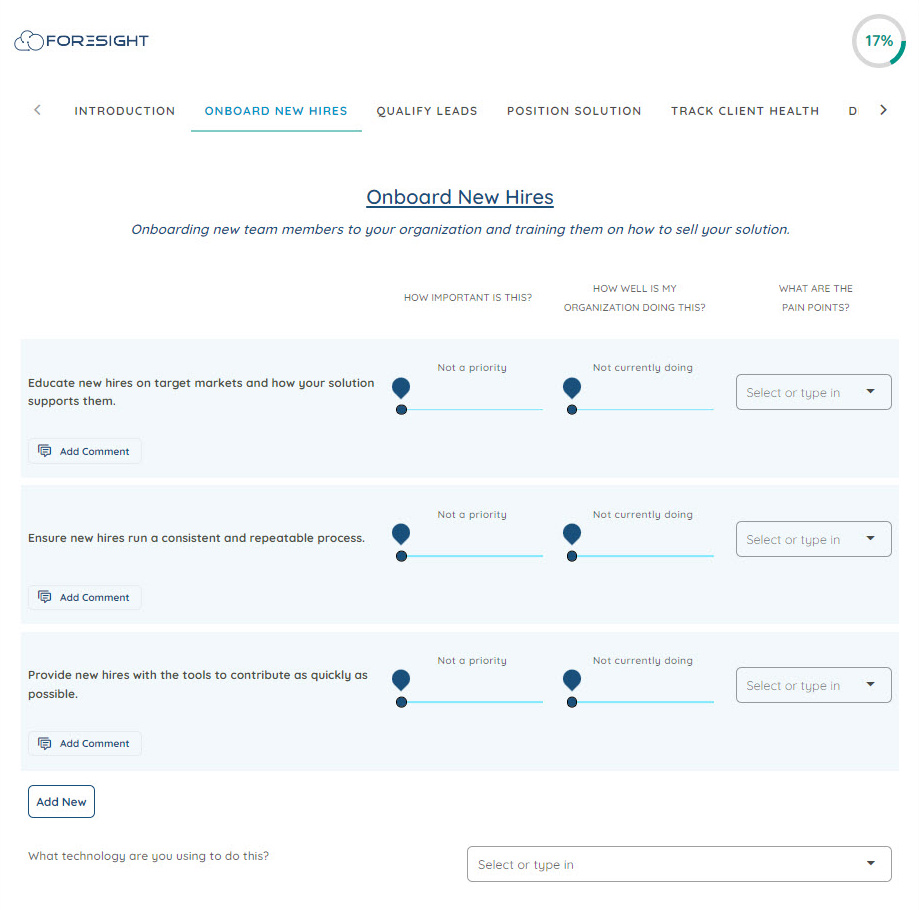In the post-”growth at all costs” world, organizations are tightening their budgets and increasing scrutiny on tech purchases. A product-centric selling approach is not going to cut it with your buyers today. Forrester Consulting finds that only 10% of potential buyers have reported that sales and client success reps focus on delivering value through their products or services.
Closing the value gap is the only feasible solution for revenue teams.
87% of growing companies prefer the value-based selling approach. Why is that? Value-based selling focuses on:
- What your buyer needs
- What pains they are currently experiencing
- How you can help them
Your buyer’s decision is dependent on how effectively your product (or service) can close the “value gap”. Next, let’s discuss why and how to close this value gap.
Why Close the “Value Gap”?
Essentially, the value gap is the difference between:
- How a buyer is operating today (their current experience)
- How they could be operating by levering your solution (their ideal world)
The value gap is the gap between your buyer’s current experience and their ideal world.
No matter if you are closing a new client or renewing an existing one, you will produce revenue only after you can close the value gap for your buyer.
Without closing the value gap, revenue teams can end up:
- Losing deals that could have been won
- Churning clients that had a real need for their solution
- Shrinking their client base because they failed to deliver real value
Additionally, potential buyers are only spending 5% of their buying time with your team. This means that you need to maximize the effectiveness of this 5% time to close this value gap and close a successful deal.
How can your revenue team achieve this? Let’s discuss this in the next section.
How to Close the “Value Gap”
Here is how the revenue teams can close the value gap and maximize the effectiveness of their meetings:
- Create a value assessment (VA).
63% of prospective buyers are influenced to select your product when they are offered a personalized value proposition by your team. Enterprise buyers consistently rate value assessments as incredibly helpful to support their buying process.
With a detailed value assessment (VA), buyers can identify their specific needs through questions configured to their role. By using a VA, revenue teams can address customer pain points and follow a defined agenda during the meeting.
Besides saving valuable time, the VA is an effective tool for revenue professionals to align their products (or service) with their buyer’s needs.
- Perform a value gap analysis.
A value gap analysis is useful for isolating where your buyer is struggling with their existing solution. By conducting an effective gap analysis, your revenue team will identify how your offering can best address a buyer’s unique pain points.
You can then establish a value benchmark and position your offering as the solution to key business challenges. Once your buyer adopts your solution, conduct a value gap analysis every quarter. By comparing the value each quarter to the benchmark established at the beginning of the buyer journey, your revenue team can proactively identify churn or upsell opportunities.
- Address the buyer’s pain points.
Storytelling is another proven way of increasing the effectiveness of meetings with your buyer. This method shifts the focus from your product features and benefits – and directly addresses the challenges and pain points of your prospective client.
Here are some questions that can address your buyer’s pain points:
- Which challenges are you experiencing in your workflow today?
- What are the costs of not addressing the current business challenges that you are facing?
- What would a solution to the pain points you are experiencing be worth?
- Highlight the value of your solution.
To close the value gap, you also need to quantify the value of your solution to the buyer. Communicate the unique benefits of your solution – along with the overall cost of not doing something about the problem.
Here are 4 categories to group the benefits of your solution:
- Cost savings or efficiency: or simply how your solution can reduce your buyer’s business expenses or save money due to future purchases.
- Process improvements: or how your solution can improve an existing business process – or improve the overall productivity of their workforce.
- Risk management: or how your solution can mitigate their business risks and eliminate associated costs.
- Revenue growth: or how your solution can help in growing revenues or create new revenue generation opportunities.
- Facilitate the customer journey.
55% of buyers have reported a “significant” increase of 6-9 months in their buying journey. On average, 4 out of 10 of the B2B purchase cycles end with a “no decision”.
To facilitate the customer journey, your team must deliver the right message – insights into how your solution addresses their unique needs and challenges. With the correct value-based messaging, your revenue team can communicate value at every stage of your buyer’s journey from the sales handoff to the fifth renewal.
Conclusion
The value gap enables revenue teams to identify the gap between your buyer’s ideal world and what they are currently experiencing.
Revenue professionals can close the value gap by addressing the buyer’s pain points and aligning solutions to address their unique needs. Through value-based selling, revenue teams can move away from their “traditional” product pitch and maximize the impact of their meetings.


